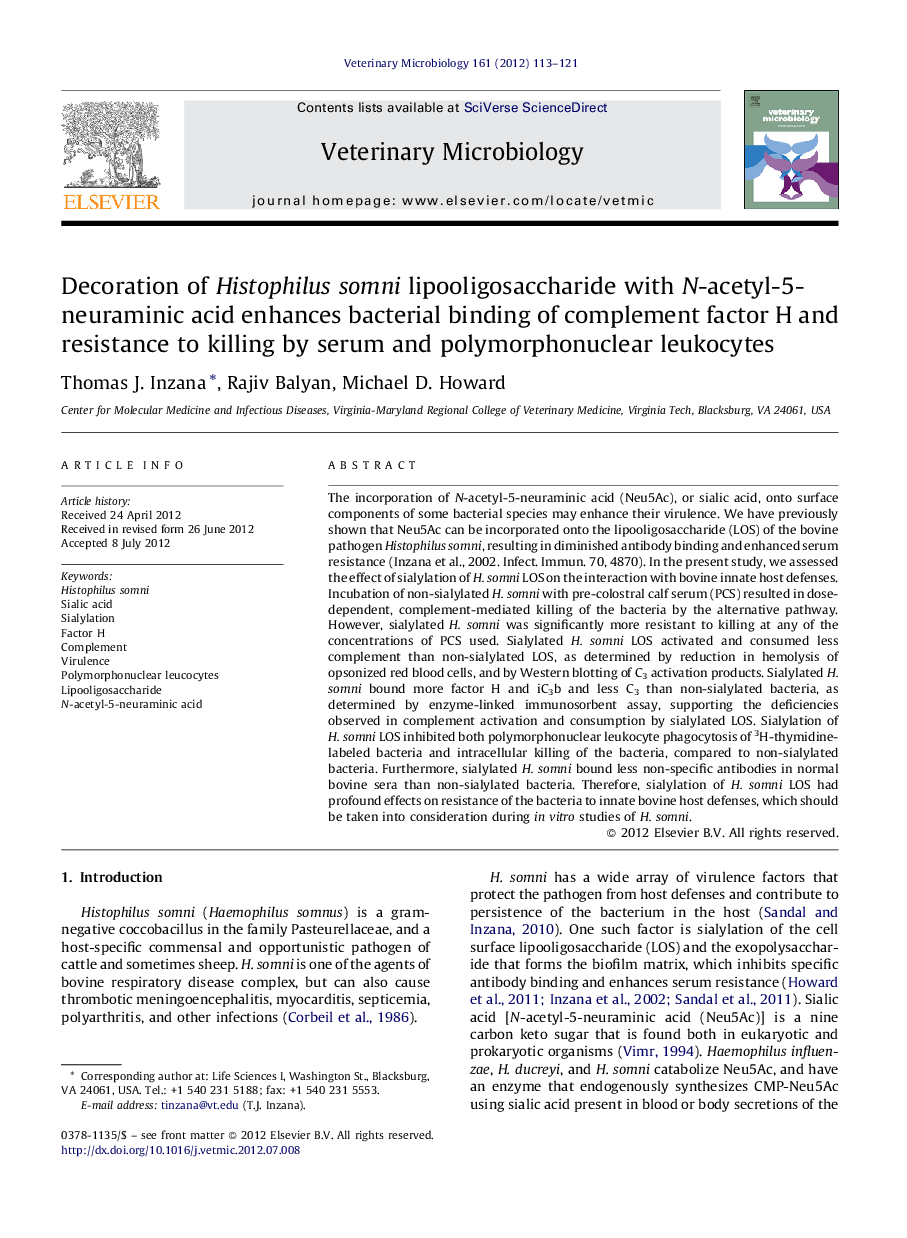| Article ID | Journal | Published Year | Pages | File Type |
|---|---|---|---|---|
| 2466986 | Veterinary Microbiology | 2012 | 9 Pages |
The incorporation of N-acetyl-5-neuraminic acid (Neu5Ac), or sialic acid, onto surface components of some bacterial species may enhance their virulence. We have previously shown that Neu5Ac can be incorporated onto the lipooligosaccharide (LOS) of the bovine pathogen Histophilus somni, resulting in diminished antibody binding and enhanced serum resistance (Inzana et al., 2002. Infect. Immun. 70, 4870). In the present study, we assessed the effect of sialylation of H. somni LOS on the interaction with bovine innate host defenses. Incubation of non-sialylated H. somni with pre-colostral calf serum (PCS) resulted in dose-dependent, complement-mediated killing of the bacteria by the alternative pathway. However, sialylated H. somni was significantly more resistant to killing at any of the concentrations of PCS used. Sialylated H. somni LOS activated and consumed less complement than non-sialylated LOS, as determined by reduction in hemolysis of opsonized red blood cells, and by Western blotting of C3 activation products. Sialylated H. somni bound more factor H and iC3b and less C3 than non-sialylated bacteria, as determined by enzyme-linked immunosorbent assay, supporting the deficiencies observed in complement activation and consumption by sialylated LOS. Sialylation of H. somni LOS inhibited both polymorphonuclear leukocyte phagocytosis of 3H-thymidine-labeled bacteria and intracellular killing of the bacteria, compared to non-sialylated bacteria. Furthermore, sialylated H. somni bound less non-specific antibodies in normal bovine sera than non-sialylated bacteria. Therefore, sialylation of H. somni LOS had profound effects on resistance of the bacteria to innate bovine host defenses, which should be taken into consideration during in vitro studies of H. somni.
